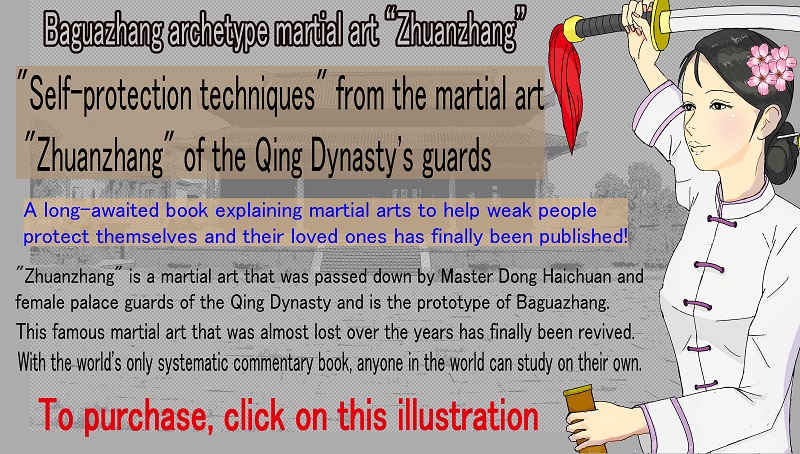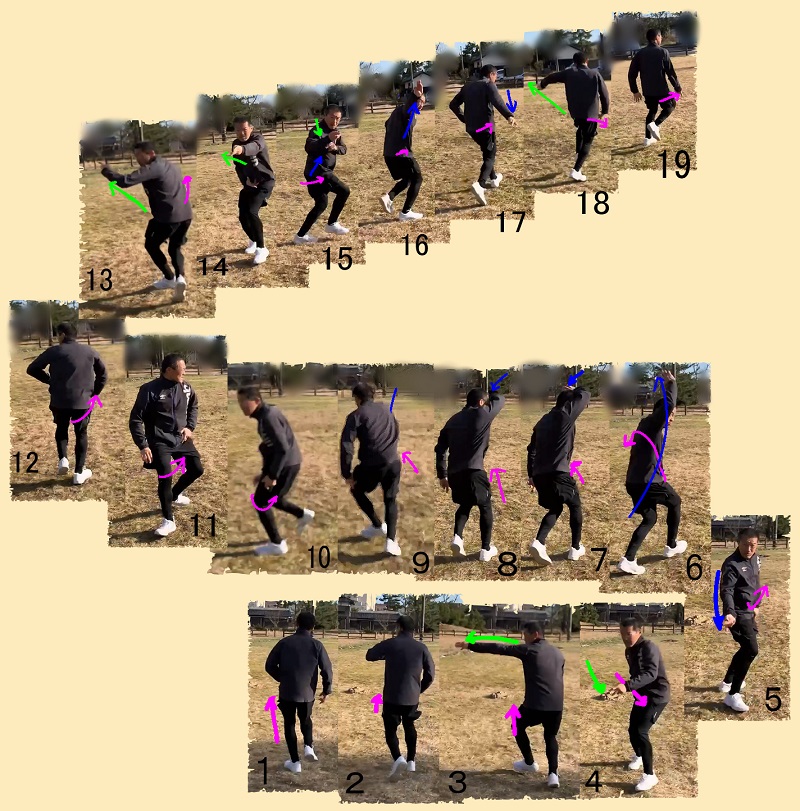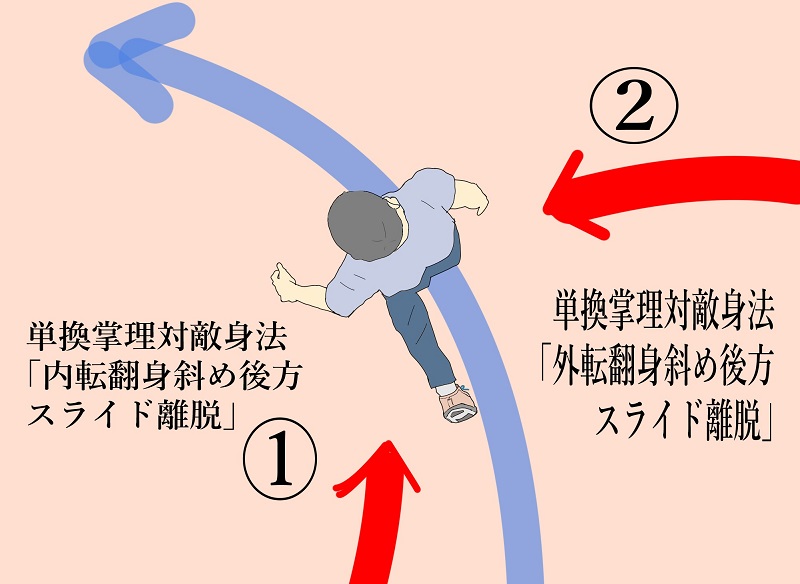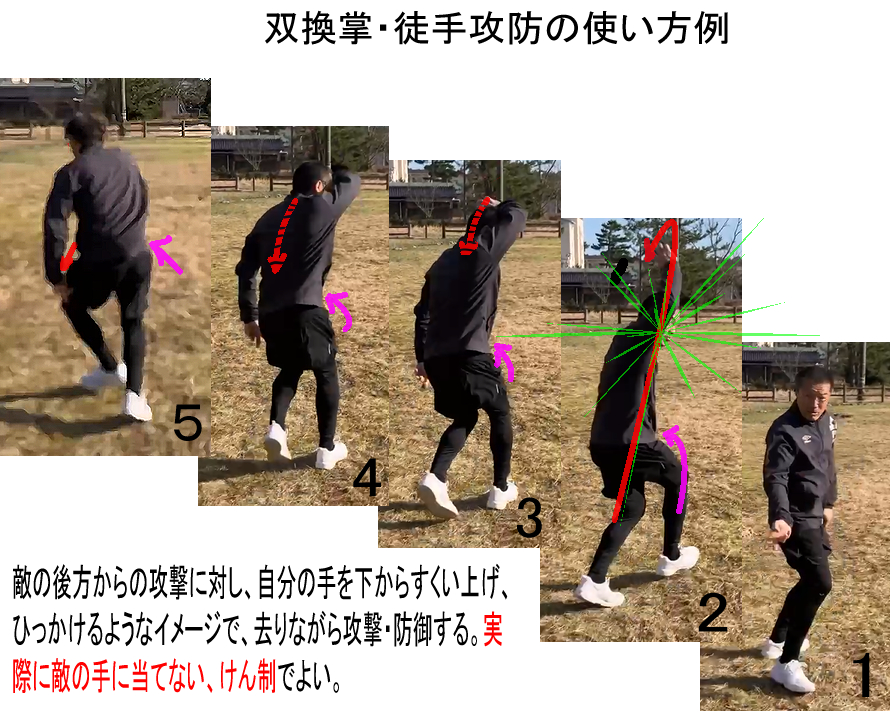Turning your back on the enemy for a moment and sliding diagonally backwards with all your might is the "turning your back on the enemy for a moment and sliding diagonally backwards" method of dealing with enemies.A typical technique is "Shuang Huan Zhang."
When multiple enemies attack you at once, you need to leave the area anyway.Or, you may be unable to respond to an enemy approaching from behind who suddenly closes the gap between you.In that case, you will need to move your body away from the spot to avoid the attack.
Or when you want to suddenly change direction while moving in a large circle.Follow the body manipulation method of ``Shuang Huan Zhang'' to outwit and outwit the enemy by turning around and pulling them away.
As you can see, ``Shuang Huan Zhang''' is an indispensable method of manipulating the body in ``Zhuan Zhang,'' which uses mobile combat.
 Diagonal backward slide where you turn your back to the enemy for a moment | Learn the movement with basic practice
Diagonal backward slide where you turn your back to the enemy for a moment | Learn the movement with basic practice Things to keep in mind when practicing "Shuang Huan Zhang" by yourself
Things to keep in mind when practicing "Shuang Huan Zhang" by yourself Explaining “Shuang Huan Zhang” with slow motion
Explaining “Shuang Huan Zhang” with slow motion

Diagonal backward slide where you turn your back to the enemy for a moment | Learn the movement with basic practice
This essential body control technique involves moving your body with your back to the enemy.This is one of the three representative body manipulation methods of "Zhuan Zhang".It is a method of manipulating the body while rotating outward, which allows the body to turn around rapidly.
To generate instantaneous force, use the method of ``closing your legs, closing your body, and then opening your legs and expanding your body.''Using both the body manipulation method and the way the body exerts force, it continues to move without staying in one place.
By using ``Shuang Huan Zhang'' you can quickly move your body to a safer area than your current location by forcefully leaving the area.Before sliding diagonally backwards, turn your back to the enemy for a moment, use the centrifugal force to spin your body around, and then perform the sliding motion, which allows you to go against your opponent's expectations in a smooth and bold manner.
In order to learn how to forcefully move away from the situation, first practice ``Shuang Huan Zhang'' by swinging it wide.Once you get used to it, you can also practice the technique of sliding diagonally backwards using only the movement of your legs, without swinging your arms.

A case where you have to shake off an enemy coming from behind is when you are being chased by not just one person but multiple people.
When you are being chased by multiple people and are about to be caught, sliding diagonally backwards without turning your back to the enemies may not be enough to deal with the situation.This is because a diagonal backward slide performed without turning your back to the enemy is a way to deal with the enemy when there is only one enemy that is about to reach you.
The diagonal backward slide method for dealing with enemies, where you momentarily turn your back on the enemy, is a large-scale physical method that can return an impending critical situation to the beginning, partly because of its unexpected movement.
By turning your back on the enemy and sliding diagonally backwards, you can instantly create distance between you and the enemy.While continuing the sliding motion, extend your hand towards your opponent in a quick, natural, and large motion.There is no need for your hand to hit the enemy.All you have to do is put it out.It is enough to block the enemy's attack trajectory and disrupt the enemy's attack.Even if the hand you put out doesn't hit the enemy, it is enough if it acts as a "deterrent attack" to stop the enemy's movement.

Things to keep in mind when practicing "Shuang Huan Zhang" by yourself
When practicing alone, be sure to have an image in your mind of an approaching enemy.When you turn your back on the enemy for a moment and slide diagonally backwards, you imagine an enemy chasing you, then run parallel to that enemy while descending and unleash a check attack.
「Show your back to the enemy for a moment and turn your body around~Diagonal backward slide」.Do not stop until this point, but continue sliding diagonally backwards.
When conducting a restraining attack, some people become so conscious of attacking the enemy that their forces collide with the enemy.The martial art you are practicing is ``Zhuan Zhang'', a martial art that is meant to be used by the weak, so be prepared to fight until the end without colliding with the enemy's power.
Let's briefly discuss the disadvantages that arise from colliding with the power of an enemy's attack.There are clear disadvantages such as being affected by physical differences and being unable to engage in mobile battles due to the time taken up by the enemy.Therefore, female ``Zhuan Zhang'' practitioners should practice with an even greater awareness of ``facing the enemy while moving backwards.''

Explaining “Shuang Huan Zhang” with slow motion
While walking in a ``Zhuan Zhang'' style, you can imagine multiple enemies approaching from behind.
Assuming that the enemy is quickly closing the distance, hold out your hand to block the attack trajectory, then quickly stick out your other hand and switch.
From this position, raise your extended hand above your head.While swinging up, he flips his body around, and as he turns, he once again holds out his hand to obstruct the attack trajectory.
While switching shoulders, he releases a check attack.
Be sure to perform this series of movements while sliding diagonally backwards.
Disclaimer
This website is not responsible for any actions taken by users using the information posted on the website.
The explanations of theory and other aspects on this website are based on what the administrator has learned through his studies and training, and the content does not deny the theories of other schools.
Currently, many renowned and highly skilled teachers of many schools are providing instruction both in Japan and overseas. We would be happy if you would use the content of this website as a way of thinking.
